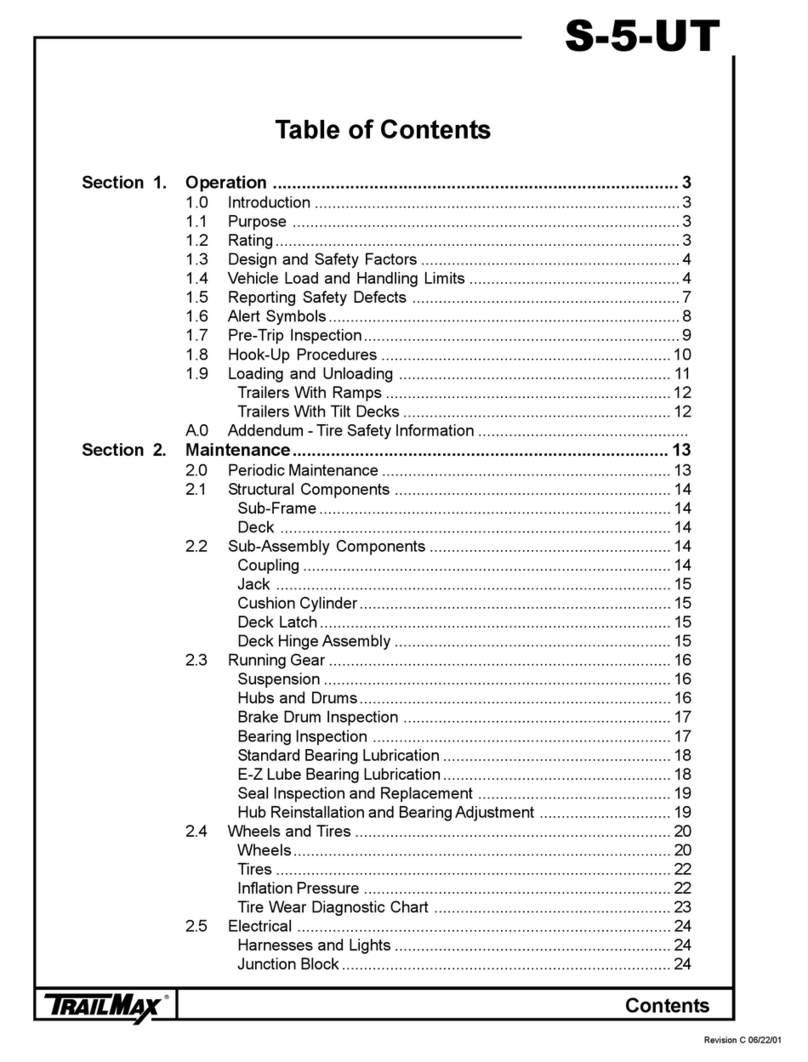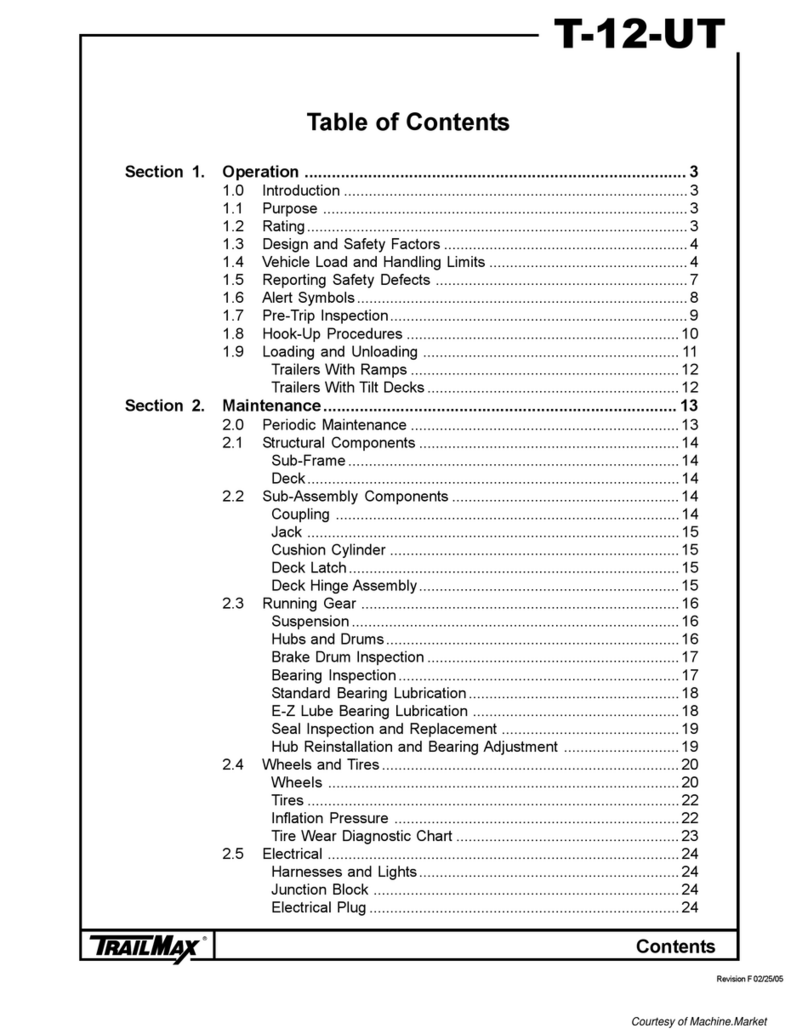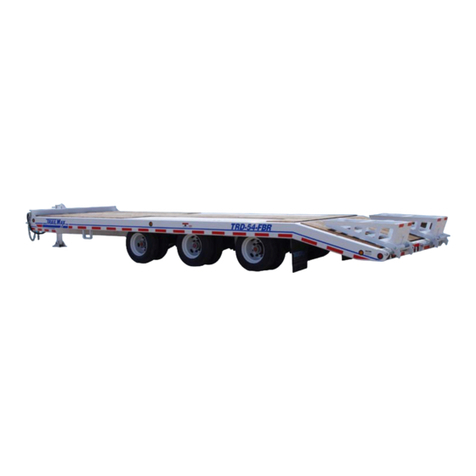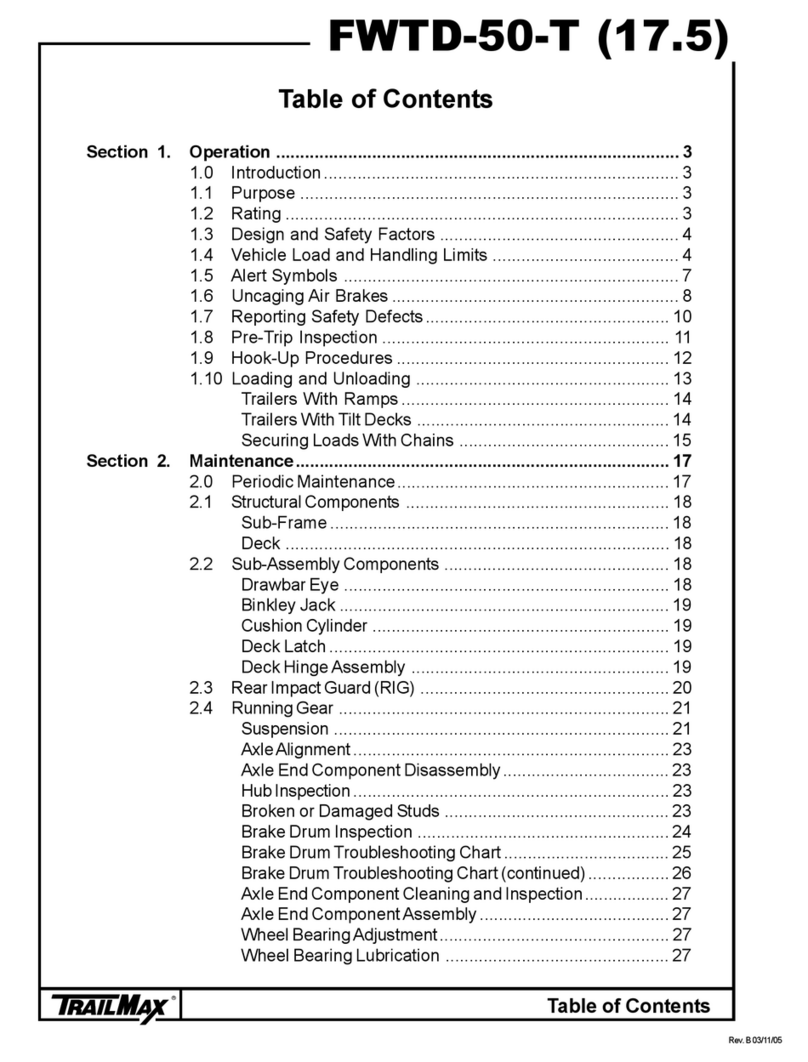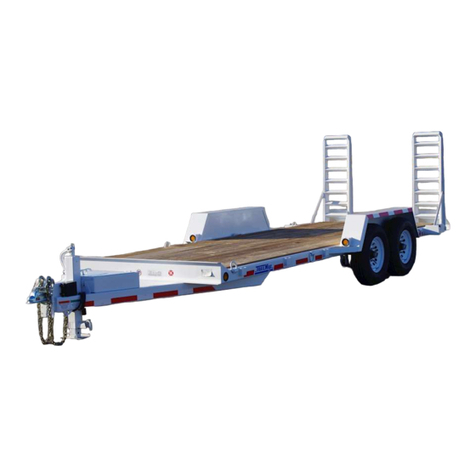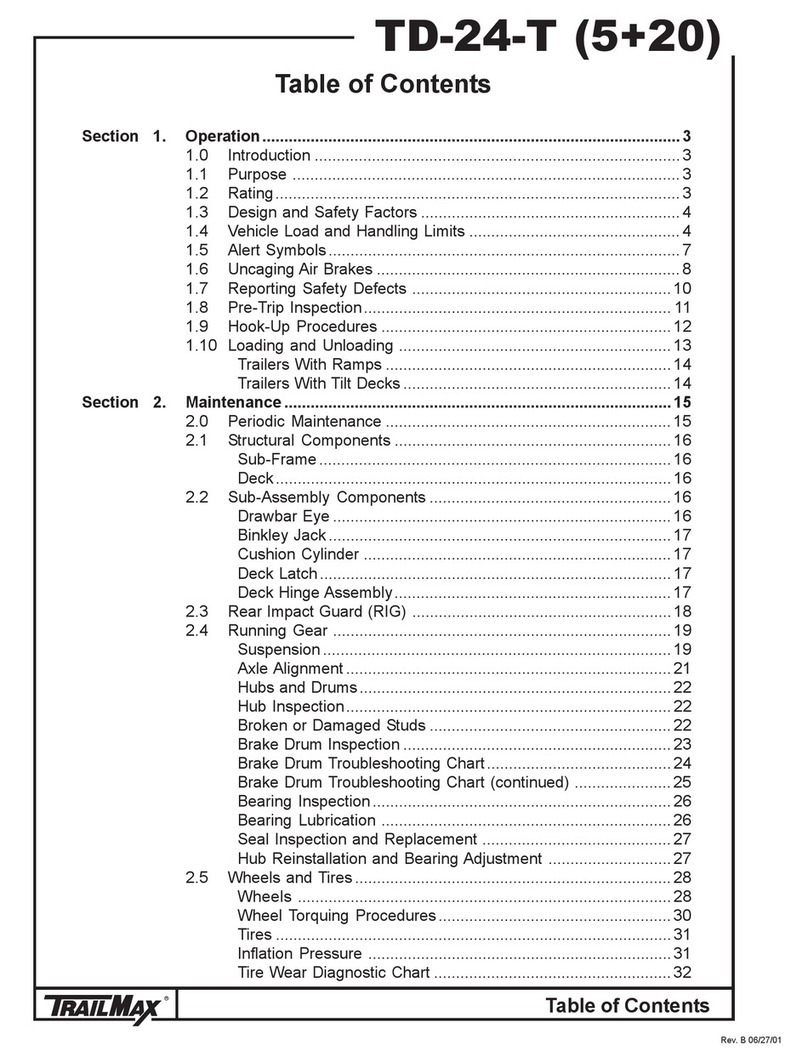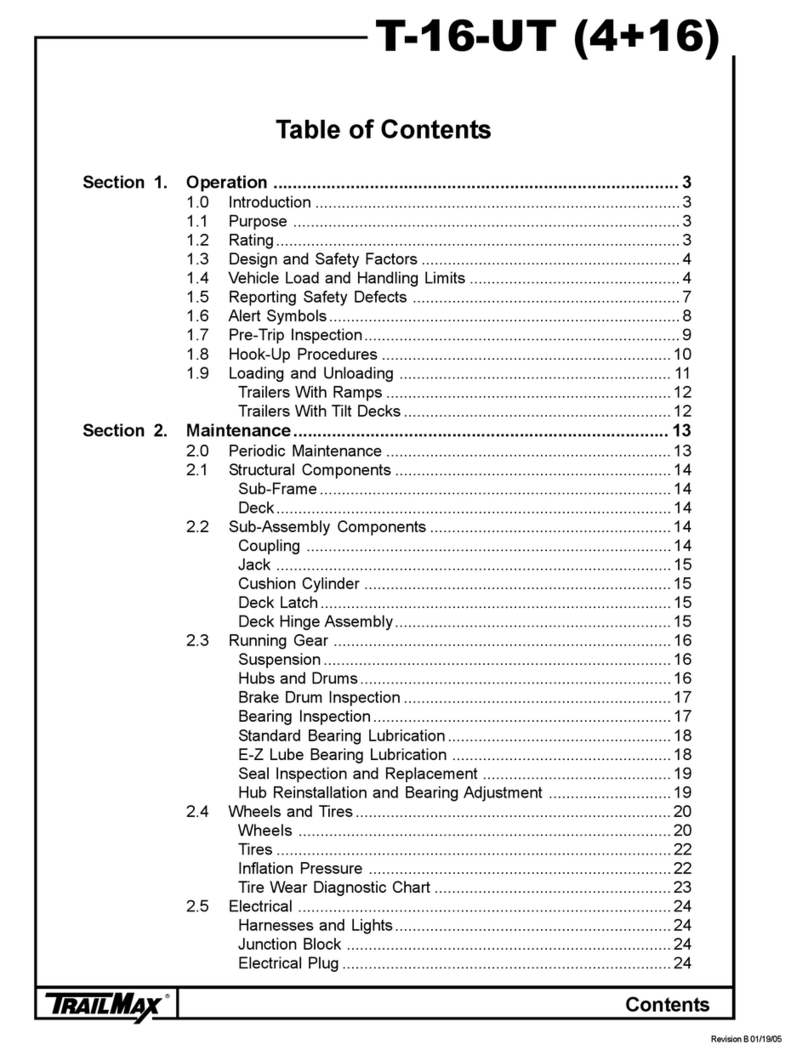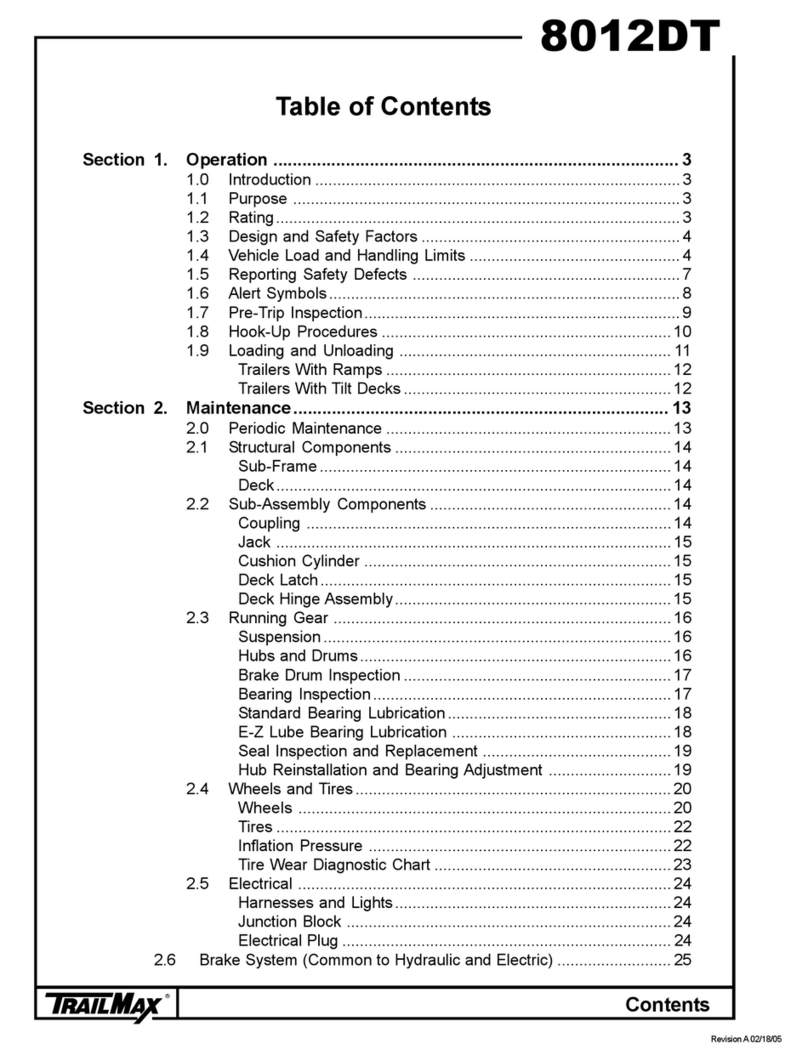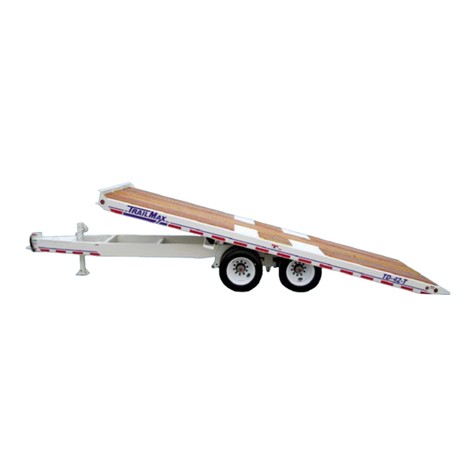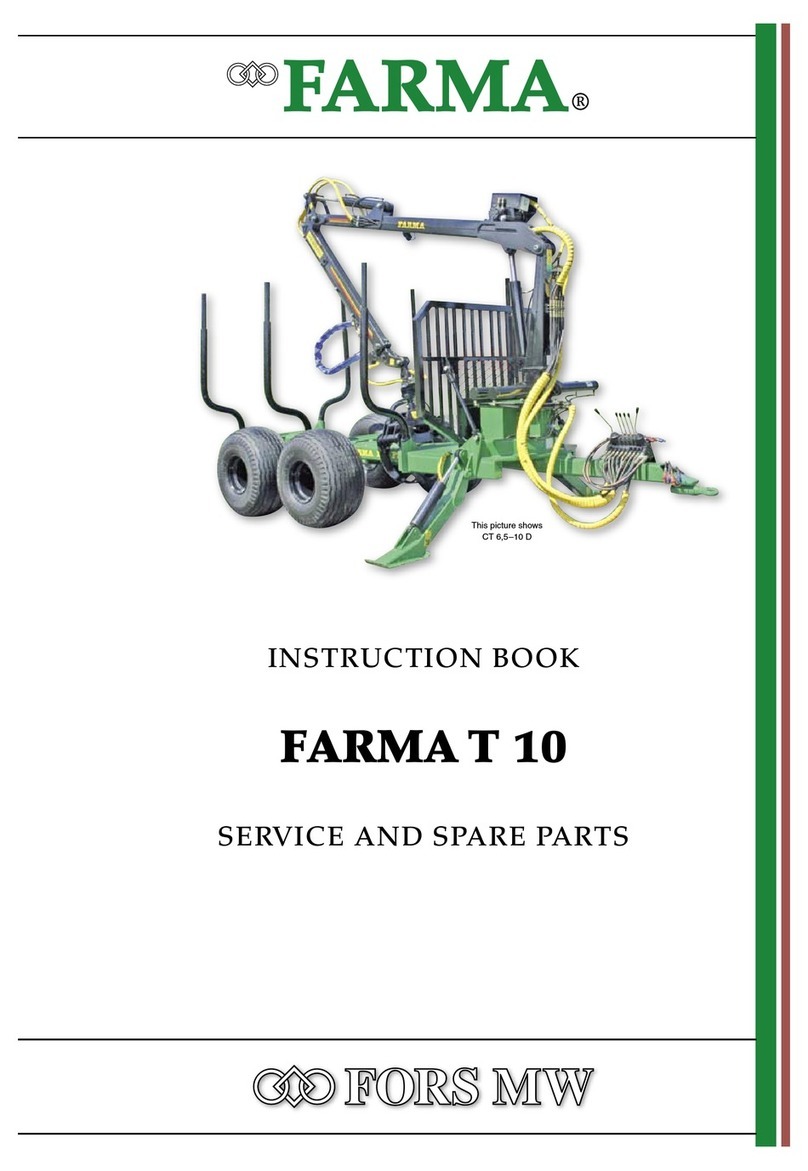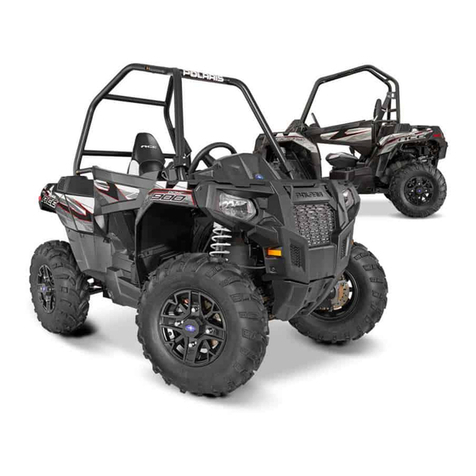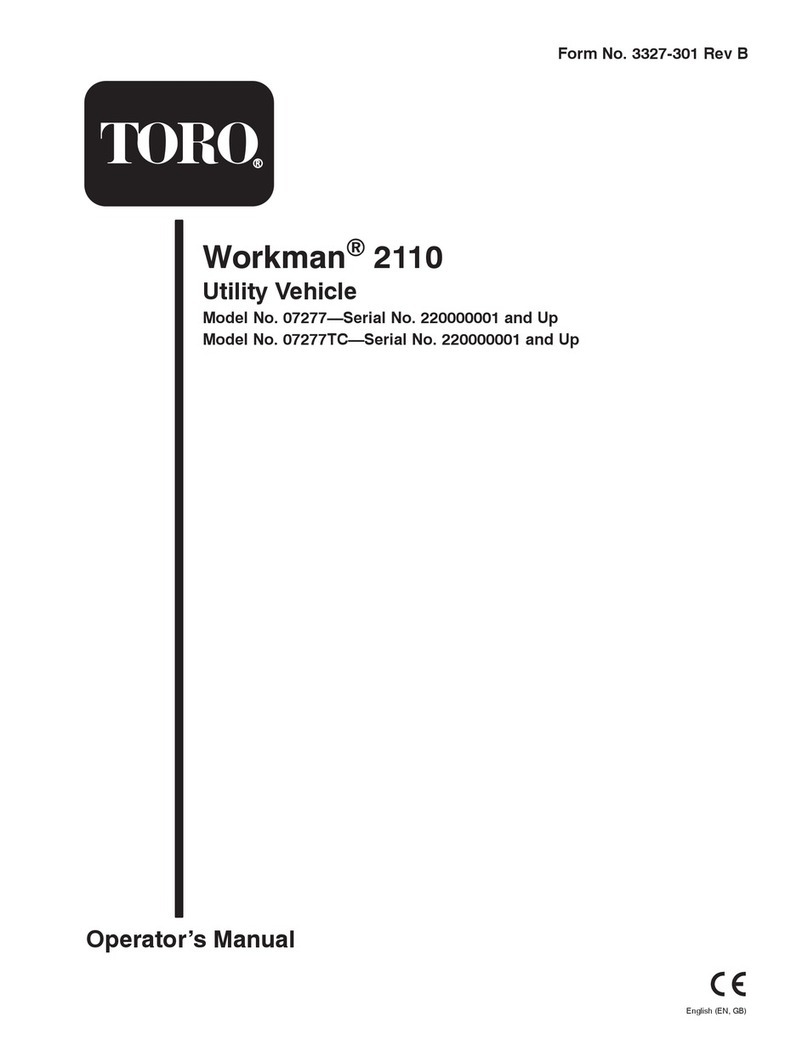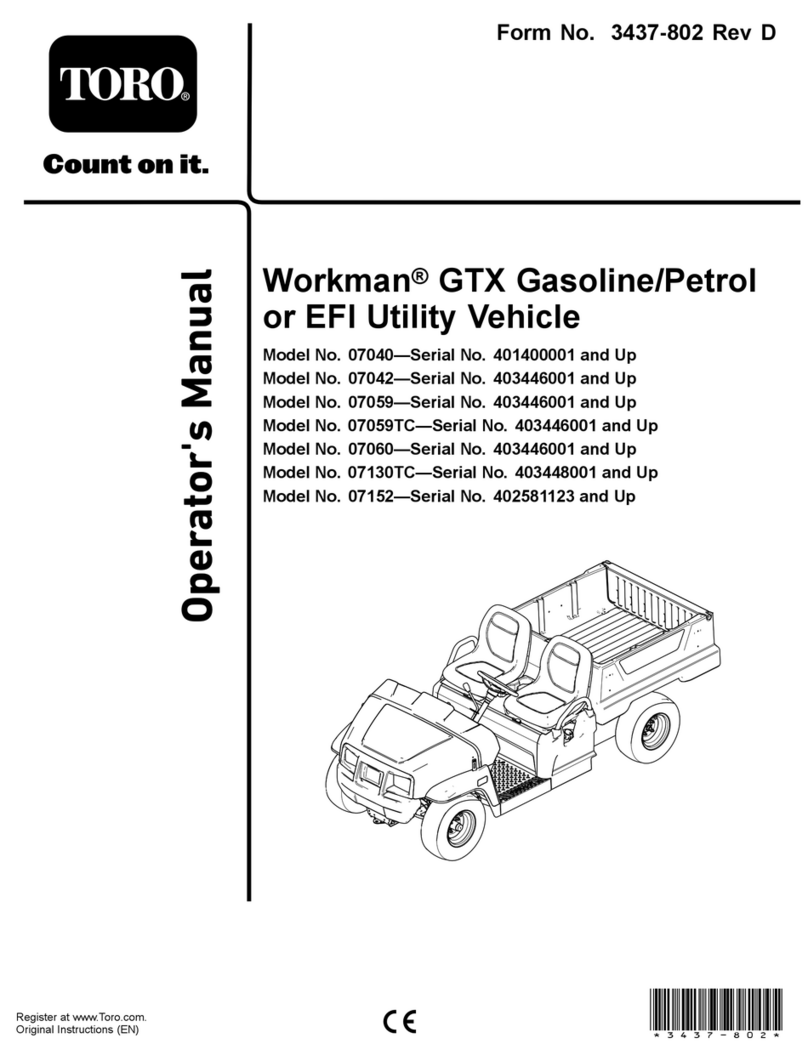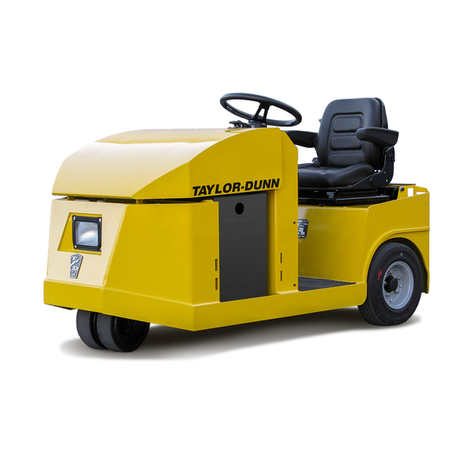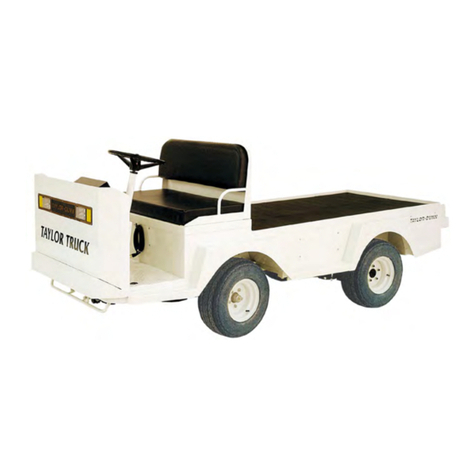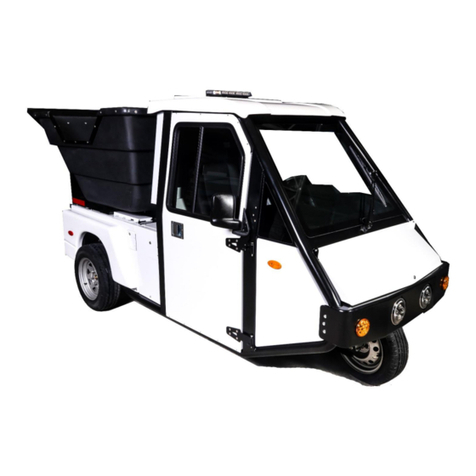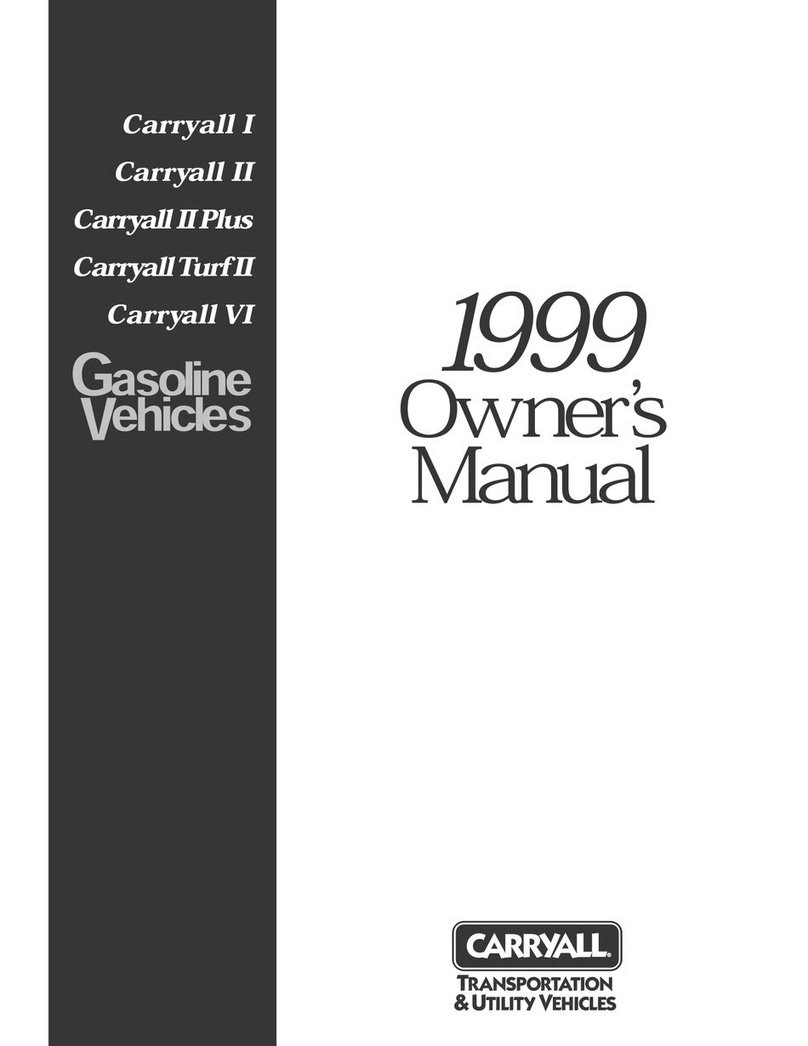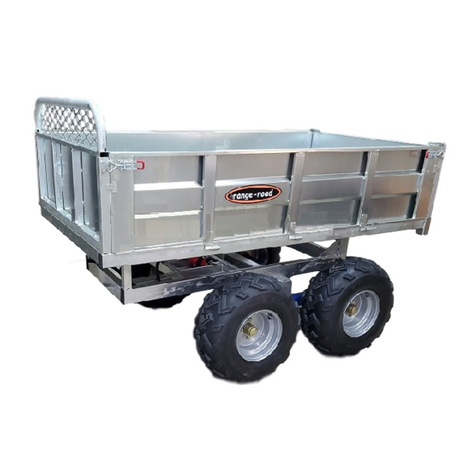
page 5
TD-40-T
®Operation
O
P
E
R
A
T
I
O
N
Overloading a vehicle should never be permitted. Overloading results in tire blow-
outs, spring breakage, frame damage, diminished braking capacity, and will severely
alter the vehicle’s normal handling characteristics. All vehicles are designed with a
maximum load capability. To best utilize these vehicles in the safest manner the loads
as shown on the certificate label should not be exceeded.
Adequate tongue weight is required for trailers to tow correctly. Inadequate tongue
weight can cause a “whipping action” particularly in shorter wheel base trailers. Too
much tongue weight can overload tow vehicle hitch resulting in reduced steering load
and loss of steering control. Selecting the correct tow vehicle is crucial for the applica-
tion.
Always maintain enough braking and stopping distance. Erratic or unequal brake
action from side to side on either tow vehicle or trailer can cause handling problems in
braking situations. A balance between tow vehicle and trailer on brake application and
release timing and synchronized pressure will reduce push/pull characteristics which
when excessive, may result in jackknife. The use of properly matched brake lining is
recommended to enhance safer braking.
Proper alignment of both tow vehicle and trailer wheels will add significantly to the
handling characteristics of the combination and allow the driver to utilize all the design
responses of the vehicle to make evasive maneuvers in the safest manner.
Irregular terrain, steep grades and crowned roads, especially rural roadways, free-
ways, exit ramps, curves, bumps and depressions introduce forces into a tow vehicle/
trailer combination that could result in an accident if proper precautions and driving
techniques are not followed. Even a vehicle that meets all maintenance and load re-
quirements can become hazardous when excessive speeds and certain roadway char-
acteristics are combined.
While on a downgrade, the force of gravity works against the driver in maintaining
control of the vehicle, particularly if the road surface is wet or slick from snow and ice
or loose material. On upgrades, the problem is spinning out due to insufficient traction
at the drive wheels, particularly on snow and ice.
Great care must be taken to avoid excessive use of brakes on long downgrades.
Overheated brakes are dangerously inefficient. It is very dangerous to brake on a
downgrade using only the trailer brakes. If this is done, the trailer brakes heat up and
fade and the tow vehicle brakes alone will not be able to stop the combination by
themselves. Drivers should reduce speed, downshift and use engine compression as
the principal means of controlling speed on long grades and using all brakes so brake
temperatures can be held to a safe level.
